FOR ALMOST 50 years the GT-R badge has been the premier pin-up for Japanese car fans.
Winning races (becoming so dominant in the early ’90s that it was essentially banned from competition), breaking records and making a big noise wherever it went, the GT-R has always been a special car, no question. But the pair of cars we’ve got here today are more special than most because they’re the work of Nissan’s tuning and racing arm, Nismo.
Now that Nissan’s marketing department has got its grubby hands on the badge you can even get a Nismo-branded 370Z, which is actually a decent steer despite its age. However, in other parts of the world the famous nameplate has found its way onto the Micra and Note.

The name – a contraction of Nissan and Motorsport – is easy enough to understand, but the company actually came about through the merger of Nissan’s two separate racing divisions: One that dealt with privateer racing, and another that looked after the factory efforts. Racing was always the focus, so when Nismo did turn its attention to road cars, the results were spectacular.
The R33 400R and R34 R-tune cars we’ve got here are fast, rare and hugely valuable. But beyond the parentage, what makes them so much more special – and does the driving experience live up to the hype?
Looking absolutely stunning in Deep Marine blue paint offset by silver stripes running end to end along the flanks, it’s clear from your very first glance at the Nismo 400R that this is no ordinary GT-R. It’s the bonnet that does it, specifically the huge vent that looks like a not very secret trap door.
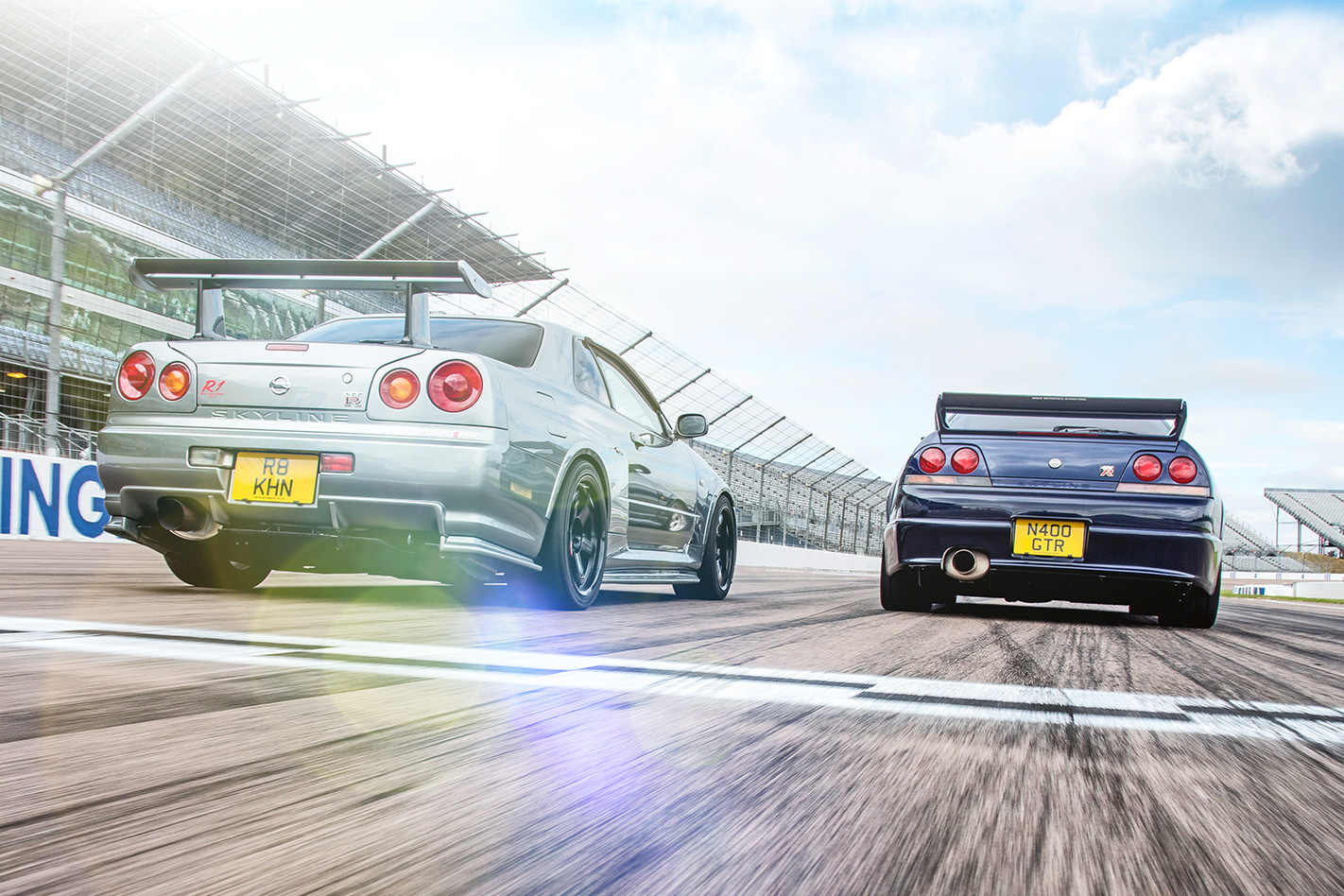
The list of new parts that went into creating a 400R is massive, and touches every single area from the headlights right through to the tail spoiler. And although the 400R isn’t as exotic as the racer, or the one-off road car that homologated it, it’s still infused with some of the same tech.
For a start, this thing was cutting edge for composite use for its time, the most arresting pieces being the Le Mans-inspired bonnet and double-wing rear spoiler. Hidden away beneath the floor, the propshaft is made from carbon too, and is 50 per cent lighter than stock.
Unlike modern performance cars, that carbon fetish doesn’t extend to the interior, which is mostly standard R33 fare, and very much plastic-fantastic. There’s a proper old-school three-spoke wheel though, and a couple of 400R logos, one in the wheel’s hub, and another above the glovebox. Then you notice the instruments.
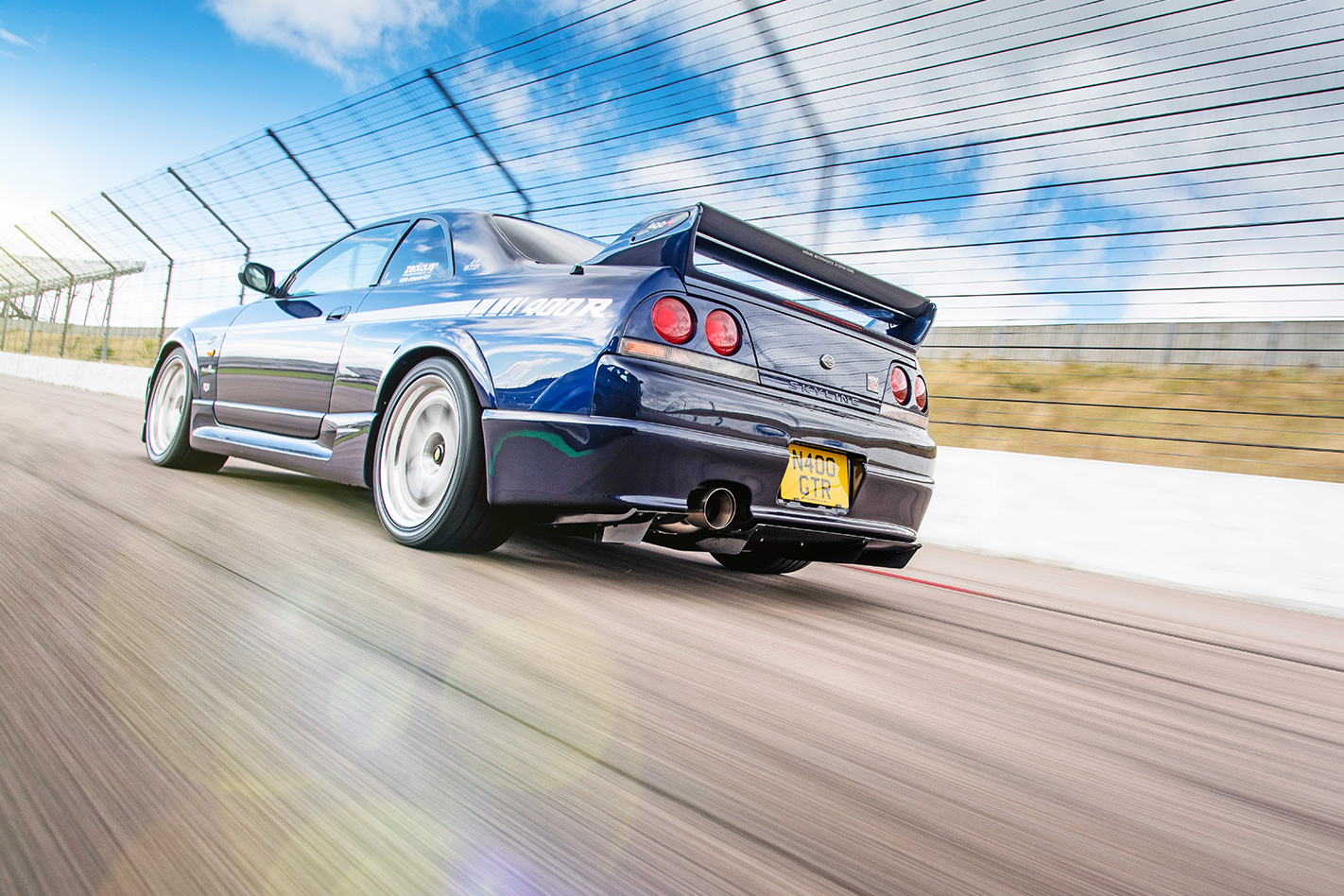
History and hubris can carry an old car a long way, easily persuading you to overlook the fact that the driving experience hasn’t aged well. But 20 years on, the 400R is still sensational… but not perfect. The clutch is fierce and the suspension is definitely harsh by modern standards, because we’re so used to the breadth of ability of cars running adaptive dampers.
But it’s bearable at low speeds, and starts to flow better with some decent numbers on the speedo. And the upshot is excellent body control. There’s precious little roll from the Bilstein-equipped suspension, and colossal grip from the fat 18-inch rubber, meaning you can lean on the light, feelsome steering without fear of the front washing wide, then ease onto the accelerator and feel the rear tyres take up some of the strain.
The LM racer lost its front driveshafts, but there’s no disappointment in the R having kept them. The 400R fizzes with feedback and the GT-R’s four-wheel-drive system was always heavily rear biased, meaning it feels like a seriously flattering rear-driver, and never like a nannying all-paw that’s forsaken entertainment and interaction in the pursuit of eradicating wheelspin.
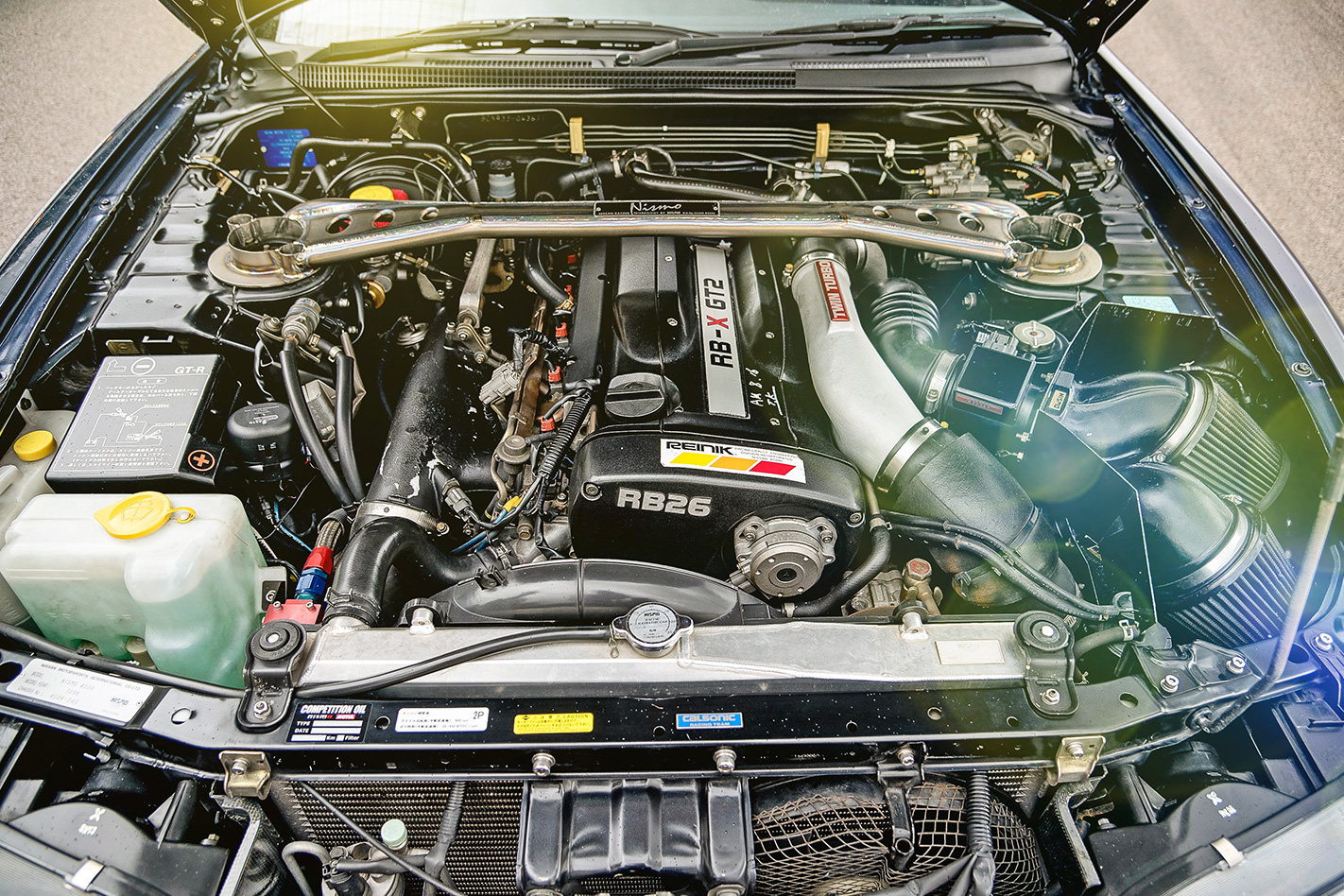
Opening up the bore from 86 to 87mm, and stretching the stroke 4mm to 77.7mm, released another 200cc, which, together with high-lift cams, polished ports, larger exhaust manifolds and new turbochargers, helped produce a heap more power. Stronger internals, meanwhile, ensured it held together while doing it – the pistons were forged instead of cast, the rods were beefier and the lubrication system upgraded.
Everyone knows that Nissan underrated the power of regular GT-Rs to honour the 206kW gentleman’s agreement among manufacturers regarding maximum output. The true figure was more like 224kW. But the 400R makes 300kW, along with 470Nm of torque. Enough to get to 100km/h in four seconds, and to top out at a true 300km/h.
You’d never accuse a stock R33 GT-R of being slow, though the thought does briefly cross your mind once you’ve uncorked the 400R for the first time. But with a third more muscle, it was always going to perform at a different level.
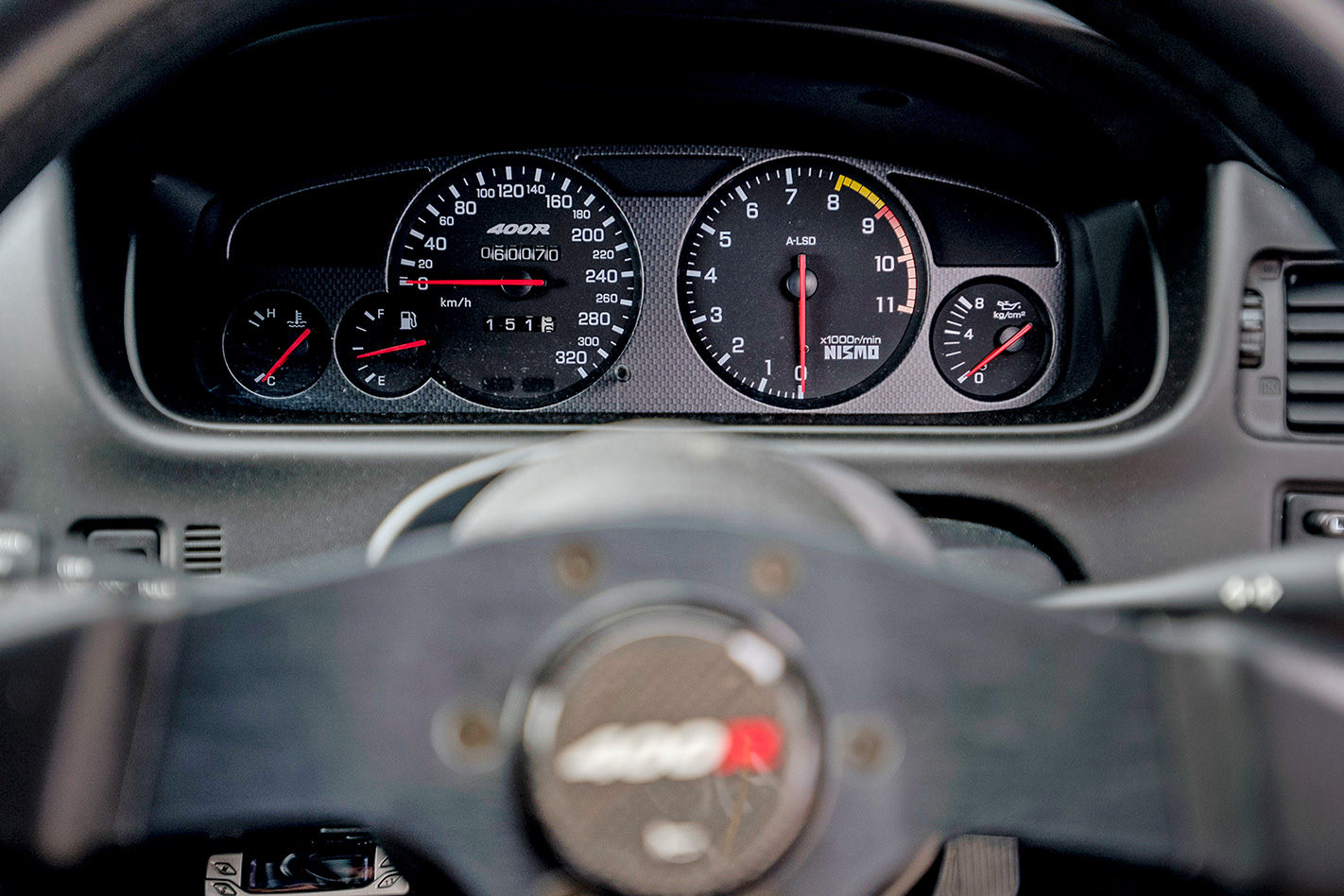
Nissan had planned to build 100 examples of the 400R, but in the end, just 44 were produced for Japan-only, and predictably, they’re worth huge money. Just how much is hard to say because they come on the market so infrequently – especially outside Japan. However, you can bet on spending at least $250K if you can persuade someone to part with one.
And that’s a big if, because for many, the 400R is the definitive road-going GT-R. But not everyone would agree. For some, any car claiming to be the definitive road-going GT-R would have to be based on the R34, the last and most developed of the Skyline GT-R series, the final car before Nissan’s supercar jumped ship from the Skyline series altogether, becoming, in the R35, simply GT-R.
Shorter, lighter, and even sharper to drive than the R33, the R34 was a perfect platform for Nismo to do its stuff. Most famous and well known of those R34-based Nismo creations is the Z tune, created when Nismo got the go-ahead from Nissan to buy back and modify immaculate low-mileage examples of the R34 that had recently ceased production to celebrate its 20th anniversary.

If you took your own R34 to Nismo – and it didn’t matter which; Nismo would mod GT-Rs, V-specs and even the super rare Nür versions – and if it was deemed fit enough, you could apply some of the same flavour of components that would later make up a Z. The R34 we’ve got here is one of those.
Back in 2000 the full R-tune package would have represented well over half the value of the car being converted. But you certainly got your money’s worth. Like the 400R package, the complete R-tune kit covered everything from suspension to aero mods.
But the heart was the R1 engine. Nismo produced 70-80 of these monster straight-sixes, based on the tougher N1-spec RB engine, but only around 25 R34s received it as part of the full R-tune upgrade, making them almost as rare as the legendary Z-tune.

A massive plank of a spoiler – mounted on Midori carbon risers – towers over the rear end whose bootlid wears the familiar GT-R badge in one corner, and the important (but pretty nasty-looking) R1 sticker on the other. The car here is even rarer than most because its built around a GT500 block, a component normally reserved for Nismo’s full-blown competition machines.
That doesn’t mean more power, but it did mean more strength for tuners who really wanted to push the envelope, plus it makes for some serious bragging rights at GTROC meets. Though giving away 200cc to the 400R, the R1 motor makes significantly more power, almost 335kW, compared to a claimed 206kW (but actually more like 246kW) from a stock R34.
Like the 400 you need to wind it up first, again, to around 4000rpm, before the fireworks start. This time there are six gears to play with, instead of the R33’s five, meaning it should be easier to keep the engine buzzing, although the change isn’t as sweet. This is a quick car.
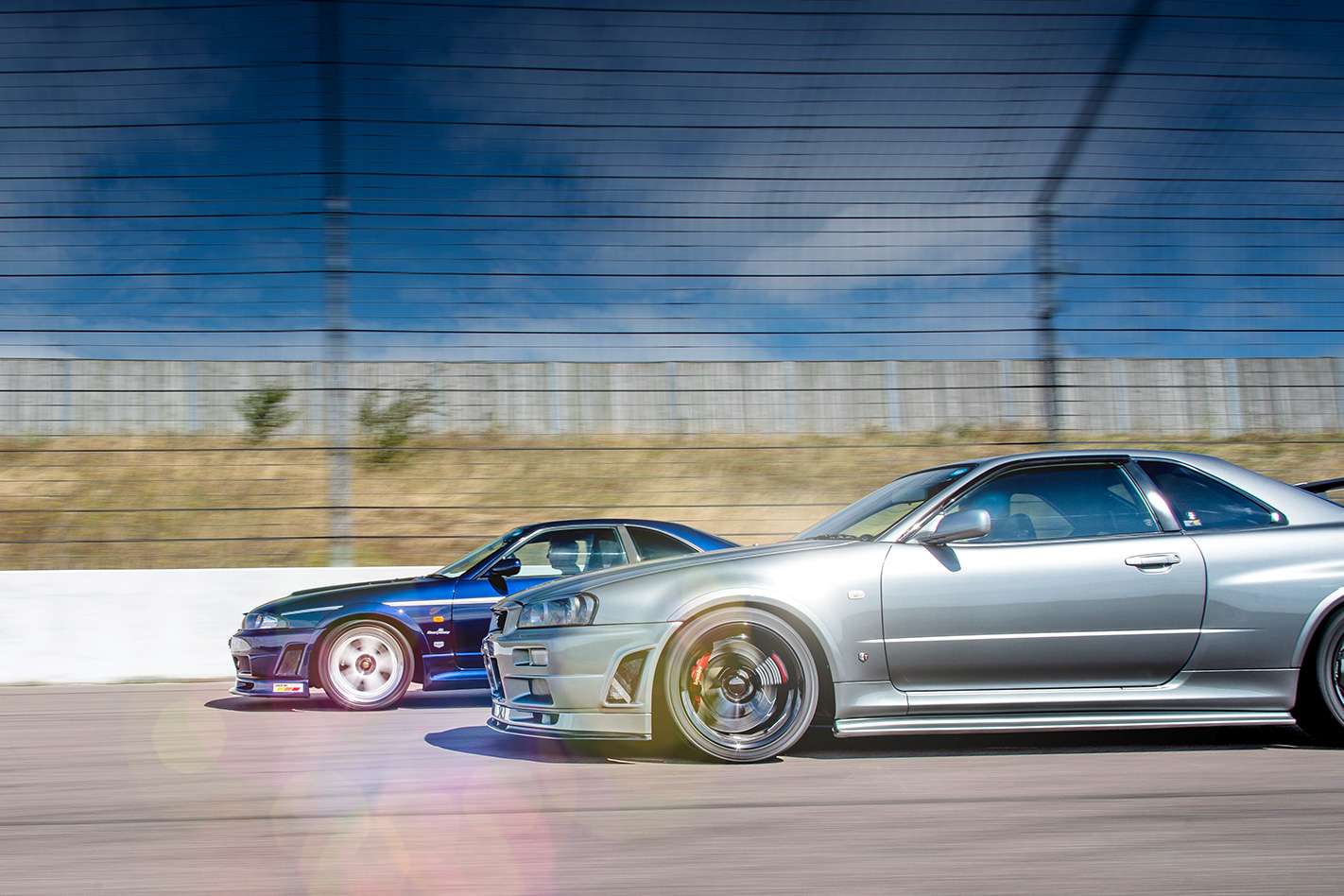
It’s still plasticky in here, and much of the switchgear feels dated, but the cabin is decidedly more modern than the R33’s and those seats with their big shoulder wings and strange covering of grippy spots, feel fabulous. The ride – not so much.
The R-tune coilovers feel optimised for scything through Rockingham’s fast banked turns or harnessing the R34’s 1600kg mass through the infield’s left-right transitions. But on the road they feel harsh and unforgiving. The steering is great though – perfectly weighted and full of feedback, and the brakes, with six-pot Brembos up front in place of the 400R’s fours, feel immensely strong.

However, flicking through the pictures as I write, it’s the 400R I keep coming back to. Those now very period looks, its historical importance as a genuine full Nismo car and, of course, grainy memories of hooning one around Trial Mountain with a worn-out hand controller all those years ago.
Back then I didn’t really appreciate what made cars like the 400R and R-tune so special, so much more than simply GT-Rs. Consider that fixed.
Gods of GT-R
The other rare R33 and R34s

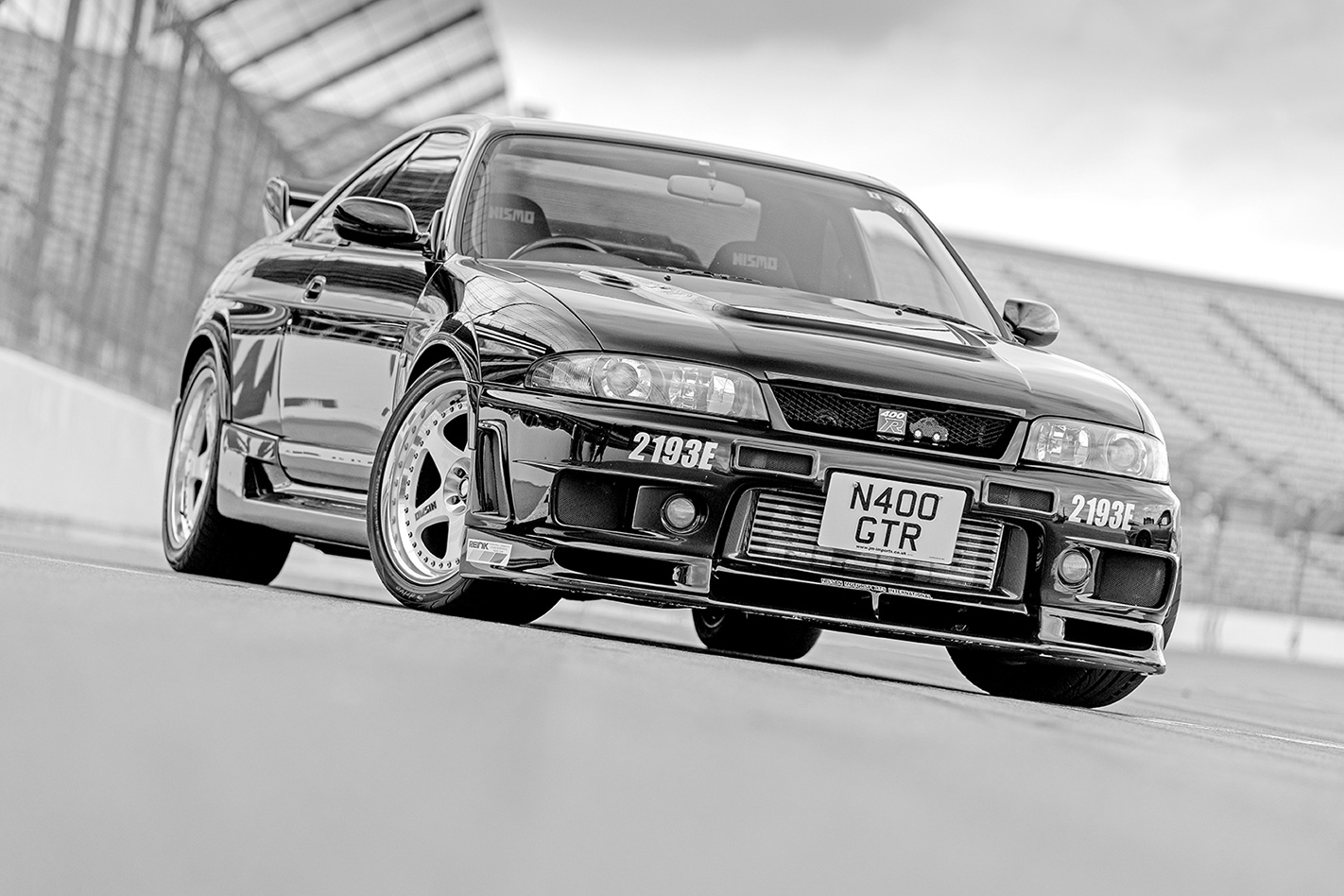
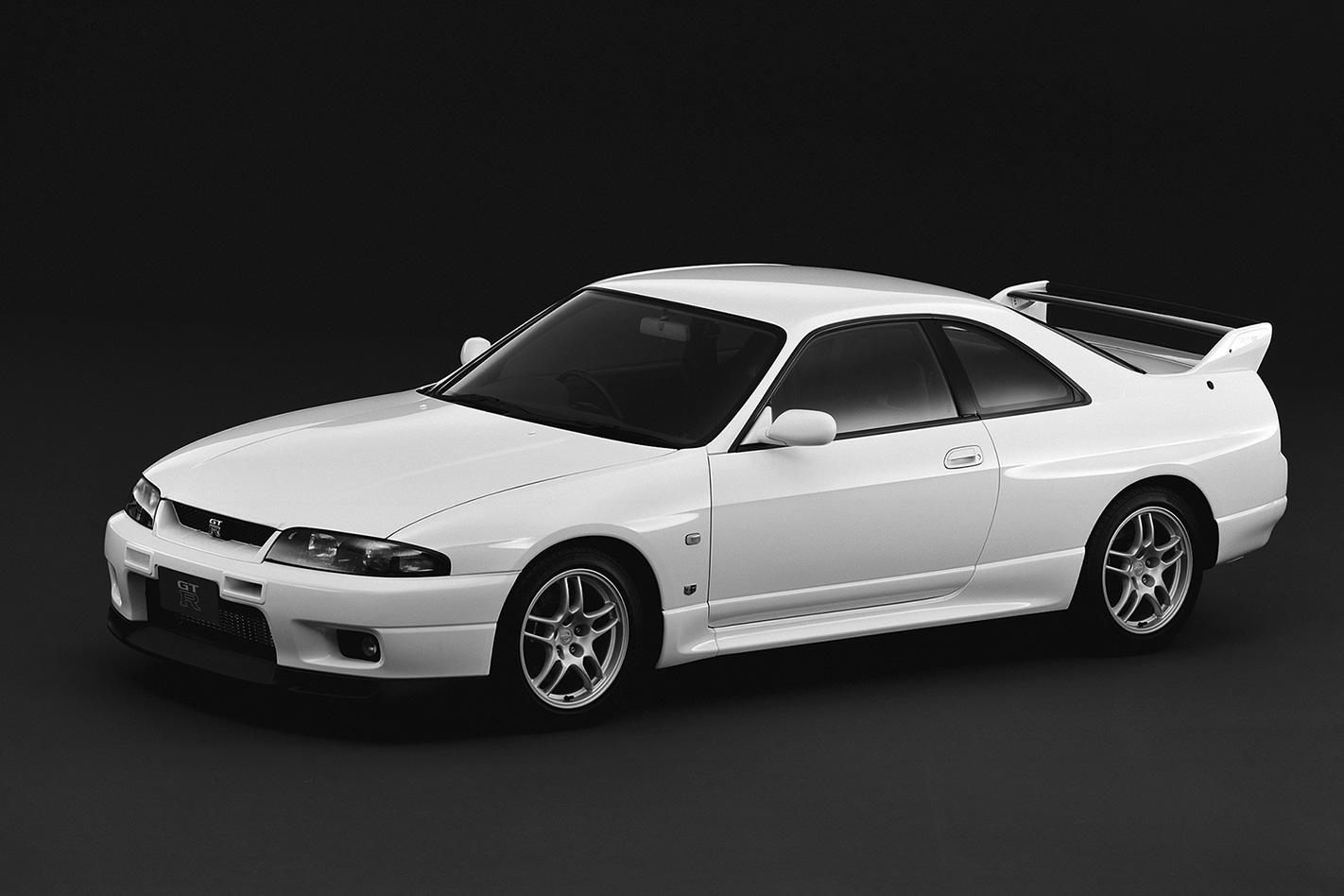
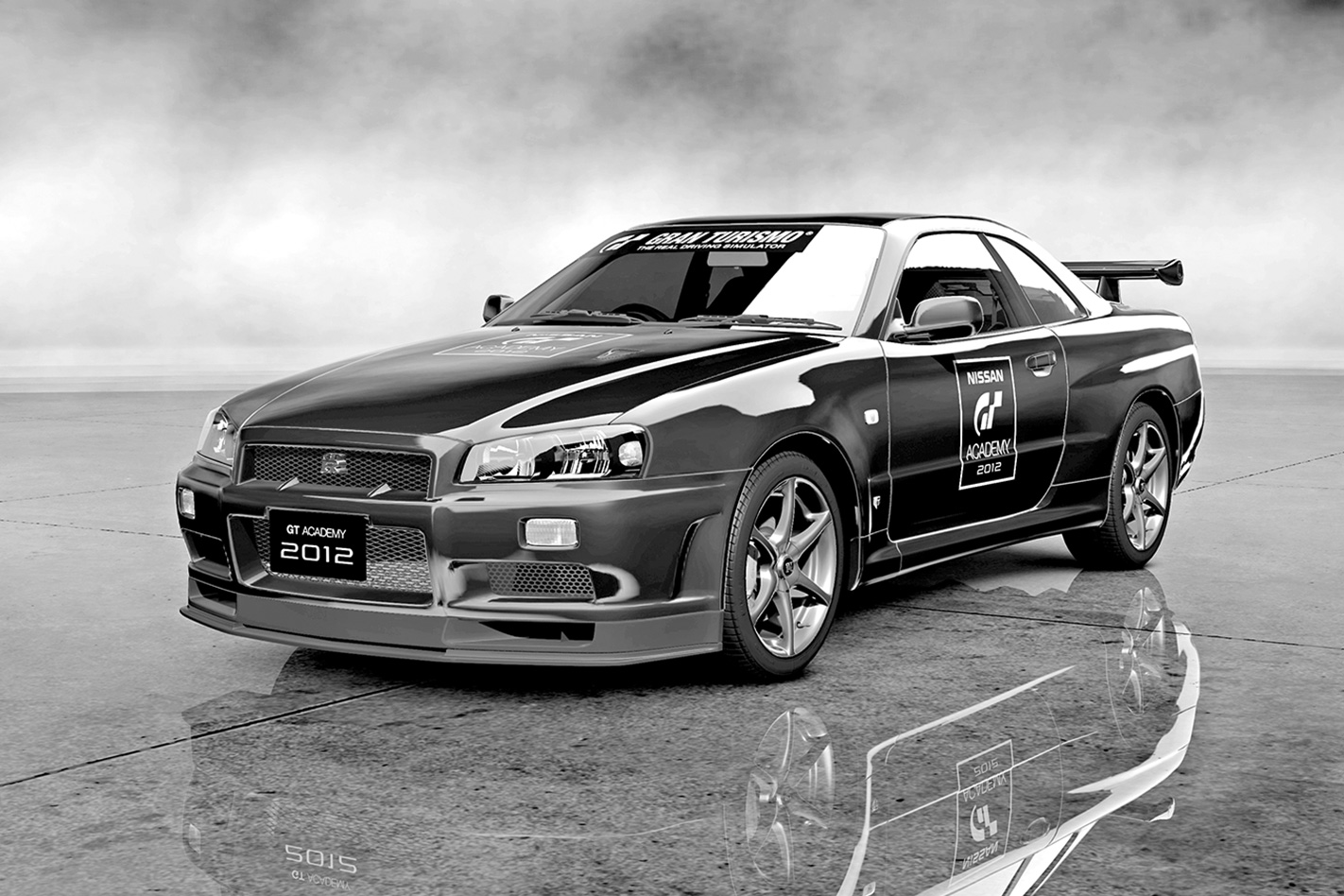


| u00a0 | u00a0Nissan GT-R R33 400R specs | Nissan GT-R R34 R-Tune specs |
| Engine | 2771cc inline-6, DOHC, 24v | 2568cc inline-6, DOHC, 24vu00a0 |
| Drivetrain | 5-speed manual, all-wheel driveu00a0 | 6-speed manual, all-wheel driveu00a0 |
| Power | 300kW @ 6800rpm | 335kW @ 7200rpmu00a0 |
| Torque | 470Nm @ 4400rpmu00a0 | 540Nm @ 4000rpm |
| Weight | 1550kgu00a0 | 1600kg |
| 0-100km/h | 4.0sec (estimate)u00a0 | 4.0sec (estimate)u00a0 |
| Top Speed | 300km/hu00a0 | 290km/h |
| Price (new) | $300,000 (estimate, in 2017 dollars)u00a0 | $300,000 (estimate, in 2017 dollars) |




